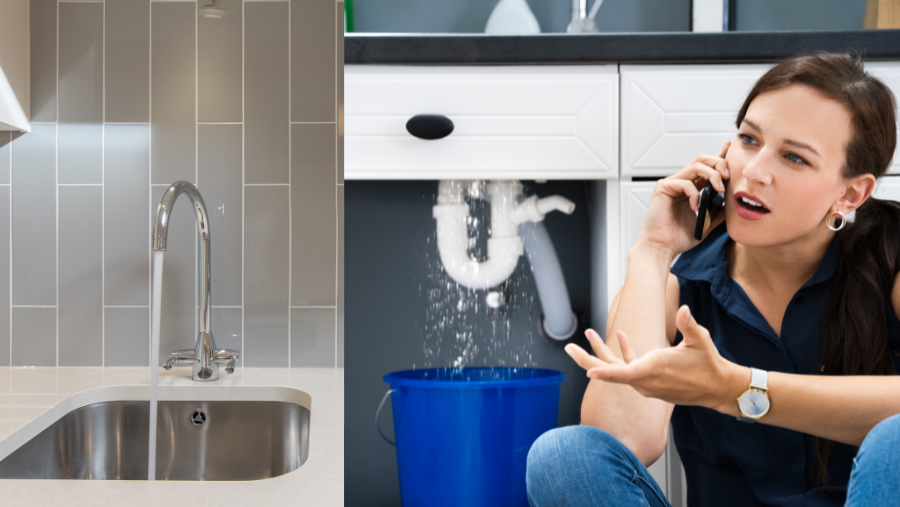Listed here below you'll find some brilliant content on the subject of Common Causes of Water Damage in a Bathroom.
The shower room is exceptionally vulnerable for moist build-up and also potential water damage because of the regular use of water in it. This post supplies simple inspection methods to assist identifying water damage risks.
The regular use water in the washroom makes it extremely vulnerable for wet accumulation and prospective water damages. By evaluating it regularly, you can reduce water related damages.
The following set of evaluations is easy to carry out as well as must be done when in every 3 months in order to maintain your washroom healthy and also to stop potential water damages caused by the bathtub, the shower, pipe joints and plumbing, sinks, closets, and the toilet
Do not neglect performing these inspections and be comprehensive while performing them. Keep in mind that these simple inspections can save you a lot of money by supplying early indications for water damages
Bath tub and also Shower
The shower and bathtub require special focus and also upkeep. Inspect the tiles as well as replace if cracked. Make sure that there is no missing out on cement in between the ceramic tiles. Examine and change fractured caulking at joints where the wall surfaces satisfy the floor or the bathtub. Obstructed drains pipes as well as pipes troubles will certainly stop the tub from drying and also might suggest serious troubles under the tub. Speak with a professional quickly to avoid structural damages. Focus on discolorations or soft locations around the tub walls as they might suggest an internal leakage.
Plumbing
Signs for water damages are hard to identify considering that most pipelines are set up inside the walls.
Pay unique attention to floor covering as well as walls dampness as well as discolorations as they might indicate an unseen plumbing problem. Examine moisture degrees in adjoining areas also.
Sinks and also Cabinets
Sinks as well as cabinets are subjected to moisture and also humidity day-to-day as well as are often ignored. Inspect consistently under the sink as well as on the kitchen counter above it. Fix any type of drip in the catch as it may recommend drain troubles. Take a look around the sink, slow-moving draining pipes might indicate an obstructed drainpipe. Replace sink seals if they are fractured or loose.
The Commode
The commode is a vulnerable water junction. Check the water lines as well as look for leakages around the commode seat, in the hose, and under the water storage tank. If you discover any kind of indicators of dampness on the floor around the toilet, check for leaks in the toilet rim as well as storage tank seals.
Realize that hanging commode dish antiperspirants increases the chances for clogs.
TIPS TO PREVENT WATER DAMAGE IN THE BATHROOM
The average household uses approximately 80-100 gallons of water per person per day. For a family of 4, that's almost 2,500 gallons of water a week! The largest portion of this consumption comes from bathroom use. Flushing the toilet uses the most water, followed by taking a shower or bath. With that much water running through the home, water damage in the bathroom is bound to happen. Knowing how to spot signs of a water leak is essential to preventing long-term damage. This guide provides you with tips to reduce the impact of water damage on your bathroom.
CAUSES OF BATHROOM WATER DAMAGE
Pipe breaks are the most common cause of water damage we see in our daily jobs. The age of a pipe plays a large role in a pipe break as well as corrosion. Over time, the metal begins to break down, allowing water to escape. Frozen pipe breaks are also a concern in the winter months. Toilet overflows caused by paper products or children flushing inappropriate items. Degraded caulking around the toilet or bathtub can allow water seepage, sometimes behind the fixture, into the subfloor or walls. Condensation forms when the water in a pipe is cooler than the air temperature. Beads of water form on the exterior of the pipes, sometimes so much so that the water begins to drip and pool below. Sink or shower backups created by poor drainage. HOW TO PREVENT WATER DAMAGE IN YOUR BATHROOM
Inspect your toilet supply line for worn or frayed hoses and replace them as needed. Winterize your plumbing to prevent a frozen pipe break. Use vent fans to prevent condensation that can lead to mold growth. Routinely check and replace degraded caulking around your toilet or bathtub. Increase the temperature in your toilet tank and insulate your pipes during the warm summer months to keep condensation from forming. Use child safety locks on the toilets. Flush only toilet paper. "Flushable" wet wipes are actually not good for your plumbing system. Additionally, feminine hygiene products should not be flushed. Prevent water from escaping the tub or shower. Make sure shower curtains are in good condition. Inspect shower doors and replace the seal strip if necessary. Wipe up any water that accumulates on the floor and use bath mats. Water left to sit can cause damage to the tiles and flooring. Refrain from using bath products containing heavy oils to avoid a clogged drain.

Do you like more info about How to Repair and Prevent Bathroom Water Damage? Put a comment down below. We'd be delighted to know your insights about this write up. We are looking forward to see you back again in the near future. Sharing is nice. One never knows, you could be helping someone out. Thanks so much for your time invested reading it.
Contact